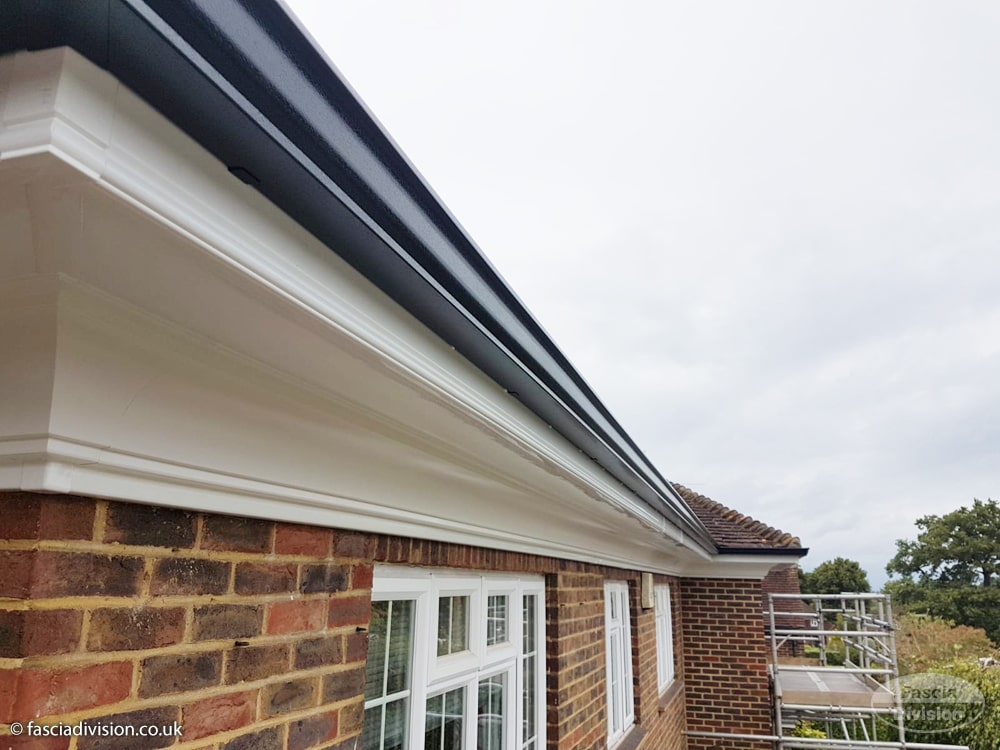
Fascia Board Repair
Add a review FollowOverview
-
Sectors YouTube Comment & Like
Company Description
The 10 Most Scariest Things About Fascia And Cladding
Understanding Fascia and Cladding: Essential Elements of Building Design
The looks and performance of a building significantly depend on the exterior style and the products utilized in building and construction. Among the eye-catching aspects that contribute to the visual appeal and security of a structure are fascia and cladding. This article will check out the meanings, functions, material options, installation procedures, and benefits of Fascia And Cladding – Repairmywindowsanddoors.Co.Uk, in structure construction.
What is Fascia?
Fascia describes the band of material that runs horizontally along the edge of a roof. Its main function is to support the lower edge of the roof and serve as a barrier between the roofline and the outdoor environment, successfully sealing the roofing structure to avoid wetness infiltration. In addition, fascia boards are pivotal in securing the underlying structures, such as the rafter beams, from weather damage, insects, and decay.

What is Cladding?
Cladding, on the other hand, is the external layer or covering of a structure that works as a protective and decorative façade. It is used over structural walls to supply insulation, boost toughness, and improve visual appeal. Cladding can be made from various materials, including wood, metal, PVC, stone, and composite products.
Table 1: Key Differences in between Fascia and Cladding
| Requirements | Fascia | Cladding |
|---|---|---|
| Meaning | A horizontal board at the roofing system’s edge | Outside covering on walls |
| Function | Supports roof edges and prevents wetness | Insulation, defense, and aesthetic appeal |
| Products Used | Wood, PVC, aluminum | Wood, metal, vinyl, stone, brick |
| Aesthetic Impact | Minimal vs. cladding | Significant visual impact |
Significance of Fascia and Cladding
Fascia Benefits:
- Weather Protection: Fascia protects roofing structures from rain, snow, and other weather condition elements.
- Aesthetic Appeal: It offers a smooth shift in between the roofing system and the wall, contributing to the general look of the building.
- Obstructed Pests: Fascia boards prevent birds, pests, and other pests from getting in the roof space.
Cladding Benefits:
- Thermal Insulation: Cladding materials can offer extra insulation, reducing energy expenses.
- Moisture Barrier: Proper cladding functions as a barrier versus wetness, protecting the underlying structures.
- Sturdiness: Cladding products like metal or stone are resistant to weathering and can last a long period of time with minimal maintenance.
Types of Fascia Materials
Fascia products can differ substantially based upon efficiency, look, and cost considerations. The most typical products consist of:

- Wood: A conventional option that provides natural beauty however requires routine maintenance to avoid decaying and contorting.
- PVC: A low-maintenance option that is waterproof and readily available in numerous colors.
- Aluminum: Resistant to rust and easy to set up, however may be less aesthetically enticing than other materials.
Kinds Of Cladding Materials
Cladding materials encompass a broad variety of choices, each with its distinct characteristics:
- Wood: Provides a natural and warm aesthetic however requires treatment to resist pests and weather.
- Vinyl: Affordable and low-maintenance, readily available in panels and numerous colors.
- Metal (Aluminum, Steel): Provides a modern-day appearance, is resilient, and shows energy effectiveness.
- Brick: Traditional and strong, it uses exceptional insulation and minimizes the requirement for regular upkeep.
- Stone: Provides a high-end aesthetic and exceptional toughness however can be expensive.
Installation of Fascia and Cladding
Installing Fascia
- Preparation: Remove old fascia (if relevant) and clean the location.
- Step and Cut: Measure the length of the roofing edge and cut the fascia material accordingly.
- Affixing: Secure the fascia board to the rafter ends utilizing nails or screws.
- Sealing: Apply caulk around joints to make sure a water tight seal.
Setting up Cladding
- Preparation: Ensure the wall surface is clean and level. Add a wetness barrier if required.
- Framing: Install vertical battens or a framework for the cladding to attach to.
- Procedure and Cut: Measure the cladding panels according to wall height and width.
- Affixing: Fix the cladding panels to the framework utilizing specified fasteners, ensuring appropriate alignment.
- Trimming and Finishing: Add trims at the edges and apply any necessary sealants.
Frequently asked questions About Fascia and Cladding
What is the typical life expectancy of fascia products?
The life-span of fascia varies by material: wood can last up to 20 years with correct maintenance, while PVC can last over 30 years, and aluminum has a lifespan even longer than that.
Is cladding essential for all structures?
While cladding is not necessary, it is highly useful for improving insulation and safeguarding the building from weather elements. For commercial buildings, it is practically necessary to guarantee energy efficiency and looks.
Can I set up fascia and cladding myself?
Do it yourself installation is possible for those with home enhancement experience; nevertheless, hiring experts is advised for ensuring proper installation and adherence to building regulations.
Both fascia and cladding play essential roles in the durability and visual appeal of a building. Understanding the materials, advantages, and installation procedures of each can significantly affect the efficiency and overall look of a structure. By selecting the ideal type of fascia and cladding, house owners and builders can guarantee that their structures are not just appealing but also well-protected versus ecological factors. As the need for energy-efficient and visually pleasing structures continues to grow, embracing these important aspects of style will stay vital.


